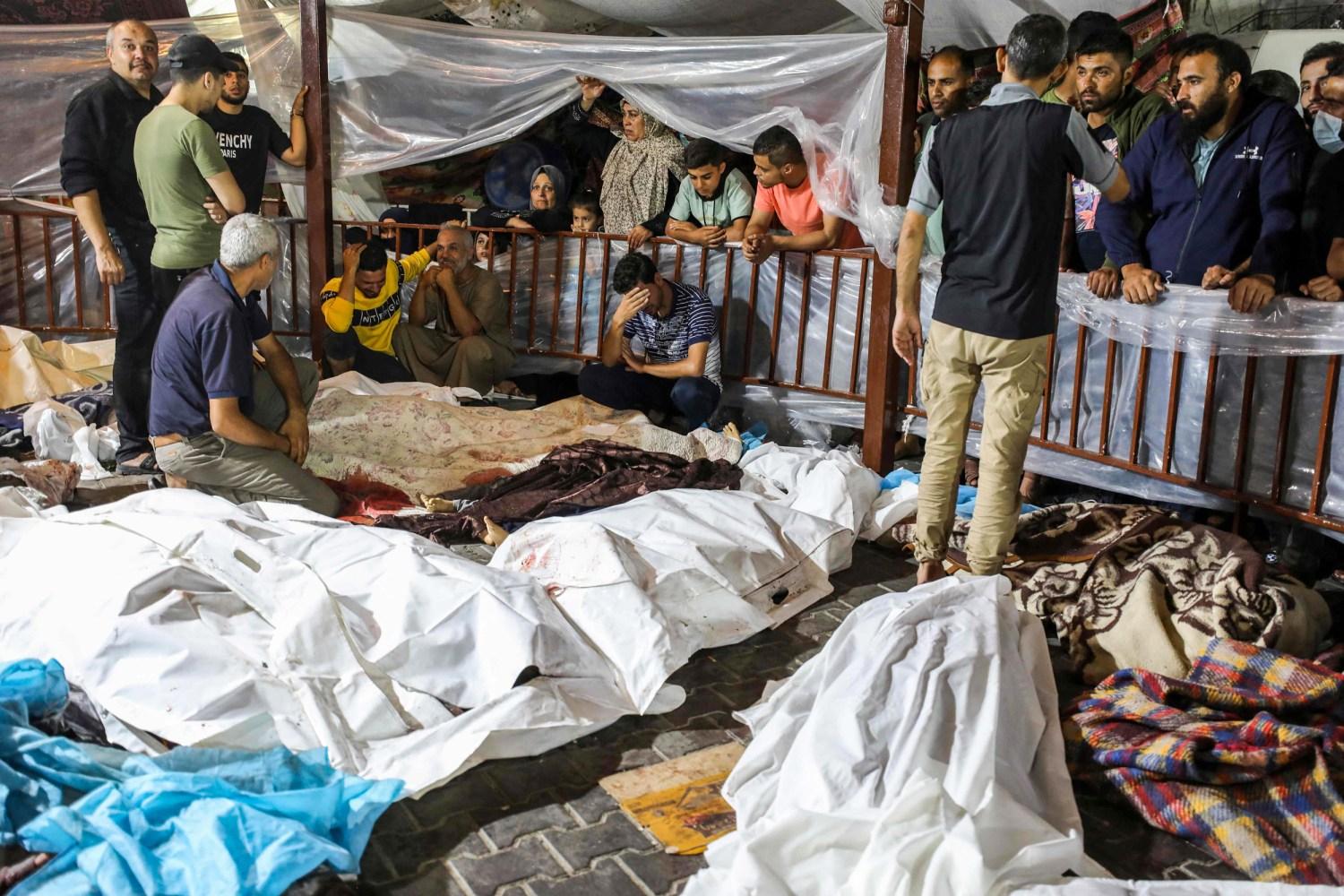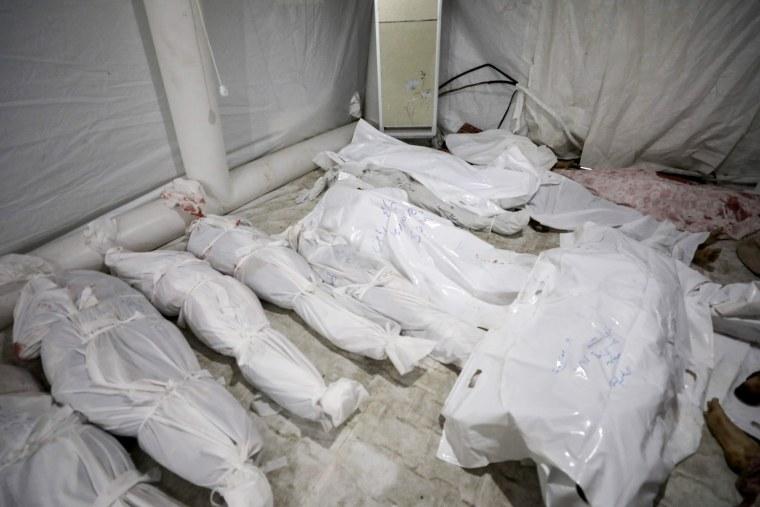In the shadowed corridors of Gaza’s beleaguered hospitals, a haunting silence mingles with the echoes of recent devastation. Rows of lifeless forms—small, fragile bodies of children and women—bear stark testimony to the brutal calculus of conflict. Their still, pale limbs tell a story of interrupted dreams and shattered innocence, a grim tableau that speaks volumes about the human cost of escalating violence in this embattled territory. The aftermath of recent Israeli airstrikes has left a haunting scene of devastation in Gaza’s medical facilities, where healthcare workers struggle to manage the overwhelming influx of casualties. Bloodied and traumatized survivors are rushed through emergency room doors, their wounds telling a stark narrative of conflict’s brutal human cost.
Medical staff work with extraordinary urgency, their hands moving swiftly between stretchers bearing small, fragile bodies of children and women. The stark white hospital corridors contrast sharply with the crimson stains of suffering, creating a visceral tableau of human vulnerability.
Doctors and nurses navigate crowded wards, their faces etched with a mixture of professional composure and profound emotional strain. Each patient represents not just a medical case, but a shattered life, a disrupted family, a community in mourning. Makeshift treatment areas overflow with injured civilians, many bearing wounds from explosive impacts that defy medical comprehension.
The pediatric sections bear particularly heartbreaking scenes. Young patients, some unconscious, others whimpering softly, represent the conflict’s most innocent victims. Nurses drape thin blankets over small frames, offering what comfort they can amid the chaotic environment.
Emergency rooms resonate with a symphony of medical machinery, hushed professional instructions, and occasional muted sobs. International medical personnel alongside local healthcare workers demonstrate remarkable resilience, treating patients with limited resources and overwhelming emotional burden.
Forensic evidence and medical reports gradually compile a grim statistical narrative, documenting the human toll of these strikes. Each body tells a story of interrupted lives, dreams suspended, and familial bonds violently severed.
Surrounding communities watch with a mixture of grief, horror, and powerlessness. The hospital becomes a microcosm of broader geopolitical tensions, where individual human suffering transcends political narratives and territorial disputes.
Humanitarian organizations scramble to provide additional medical support, recognizing the critical need for immediate and comprehensive medical intervention. Medical supplies, surgical equipment, and psychological support become survival lifelines in this complex humanitarian crisis.
The hospital’s sterile environment cannot mask the raw emotional landscape of loss, trauma, and resilience. Each treated wound, each comforted child, represents a testament to human endurance in the face of overwhelming destructive forces.
As medical professionals continue their relentless efforts, the hospital stands as a somber reminder of conflict’s deepest, most personal consequences – the human cost that statistics can never fully capture.
